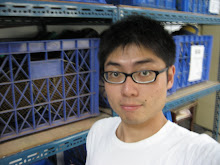This course was designed to integrate a set of school-based curriculum in National Experimental High School at Central Taiwan Science Park. The class was intended to invite students interested in observing historical changes under the context of globalization and examining historical texts with a critical mind. Besides, this class also attempted to help students gain a better understanding of Southeast Asia and establish a connection with their life in the present and in the future. In this course, each of the students played the role of a historian and role-played their participation in a short essay on issues related to Southeast Asia’s history. To achieve the learning goals, they had to learn the historical development of Southeast Asia, elements of a historical argument, and procedures of the Big6TM. With the knowledge in mind and skills on hand, they illustrated issues about historical changes of Southeast Asia with their personal viewpoints, consisting of historical arguments without information problems.
Languages and cultures of Southeast Asia played a part in our daily life with the population of immigrants from Southeast Asia increasing in the recent two decades. Following the New Southbound Policy and the new Curriculum Guidelines, our school also made Vietnamese language learning available to our 10th graders. However, their knowledge of Southeast Asia was limited. The insufficiency of their background information resulted from the design of their history curriculum, in which the history of Southeast Asia was barely touched and discussed. In fact, even to those students taking Vietnamese as their second foreign language, they had a limited understanding of Southeast Asia for being bombarded with learning a new language within insufficient teaching hours (one hour per week on average). Most importantly, most of the students were indifferent to issues in Southeast Asia for their ignorance and misunderstanding of the world. As a result, the course attempted to help them gain a better understanding of Southeast Asia through the process of learning how to write a historical argument and solve an information problem. In the course, they were asked to observe the historical development of Southeast Asia and stated their viewpoints on historical changes related to Southeast Asia. Through the process, they had to identify their information problem and solve the problem by means of the Big6TM to clarify relevant issues and find solid evidence.
Through the course, students were guided to think about the historical development of Southeast Asia critically and examine the historical texts independently. With the knowledge of being a critical historian of multicultural perspectives, they were expected to expand their cosmopolitan attitude toward the world and rethink the position on Taiwan in relation to Southeast Asia. In the language curriculum, they would be able to connect the language with the real context in their life. In the history curriculum, they would be able to think how their knowledge of history had been constructed and rethink whether such construction was valid and solid for them to understand the world in a cosmopolitan aspect. What’s more, when addressing multicultural issues in Taiwan or abroad, students could use a new spectacle to critique all the cultural phenomena with an open mind or a new historical construct. Most importantly, when engaging themselves in the sphere of Asia, they would become a freelancer, traveling between the boundaries of multiple cultures and transcending the regional borders of Asian nations.


沒有留言:
張貼留言